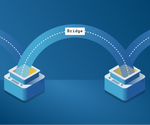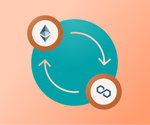

As the crypto industry is still evolving, you may find yourself overwhelmed as a new user joining the ecosystem by the industry terminologies used. This can get even more challenging when it comes to making critical choices about where you invest your valuable assets and, above all else, your long-term peace of mind.
To help unpack some of the underlying factors that govern the modern decentralized finance system, we are breaking down a key aspect all users must know before investing in crypto. Let us start by understanding decentralized finance and how it differs from centralized finance.
What is Decentralized Finance (DeFi)?
Decentralized Finance provides similar but more flexible services as traditional financial systems. DeFi was built with an emphasis to eliminate the excessive transaction fees and friction of the traditional finance system as well as building trust and access to financial opportunities. For instance, DeFi provides its users with access to permissionless borrowing, lending, yield farming, insurance, and more financial opportunities. Today, DeFi gives users access to a wide range of protocols built using smart contracts across different chains.
While DeFi provides access to wider financial opportunities, it also gives users access to transparency, security and higher yield opportunity. In addition, DeFi affords users an opportunity to own their assets. For instance, a popular term in DeFi "your keys = your assets," refers to users owning their assets just like having a key to a private vault in a Swiss bank. Hence, DeFi users have to educate themselves and ensure they connect their wallets only to trusted protocols.
What is Centralized Finance (CeFi)?
CeFi is sometimes used interchangeably with Traditional Finance (TradFi), which represents the mainstream financial systems that have persisted for centuries. However, in this instance, we use Centralized Finance to refer to recent financial services that have emerged as intermediate between users and financial services available on blockchains. While these intermediaries offer similar services as those already in DeFi to their users, they still have some fundamental differences.
The main difference with CeFi is that they are centralized entities and are the true owners of the crypto assets on their platform. Since they operate like traditional companies and follow similar business models, they are, in fact, centralized. While they offer many DeFi-like services, users do not own their private keys, and hence "do not own their crypto assets" and can technically be barred from accessing their assets.
Despite this, many users are willing to trade actual custody of their crypto assets in favor of the generally easier user experience offered by CeFi platforms.
Difference between DeFi vs. CeFi
While the offerings might be similar, and each has its own pros and cons, without going into a lot of the specifics and technicalities, we have highlighted some of the key factors by which you can understand if you are investing in a CeFi or DeFi platform.
The infographic underscores some of the critical characteristics and the differences between DeFi and CeFi. It is a simplified introduction for our new users and a refresher for the rest of us. We hope you enjoy your journey at the exciting new Frontier of crypto.
Do not keep this information to yourself. Download and share with your friends.


About Frontier
Frontier is a multi-chain, non-custodial DeFi wallet where you can buy, store, transact, swap, and invest in tokens and NFTs. Available on iOS and Android, you can easily earn passive income on your crypto by staking or supplying assets in DeFi apps. The Frontier Wallet app offers a secure mobile interface that lets users easily access a range of DeFi features with direct connectivity with dApps across chains.
Using Frontier, users can also track wallets, collect & manage NFTs and get push notifications on any transactions. Adding more chains and simplifying access to Web3, Frontier Wallet aims to make DeFi more accessible for the next billion users.
Website | Twitter | Telegram | Discord | Instagram | Youtube | IOS | Android

Head, Communications & Content






